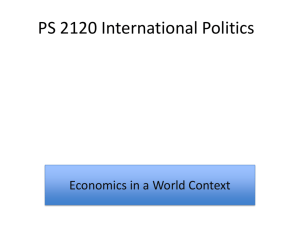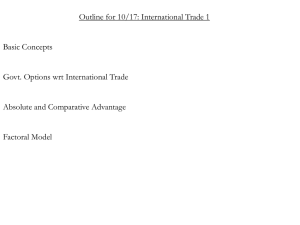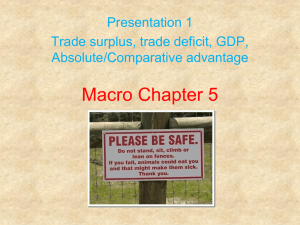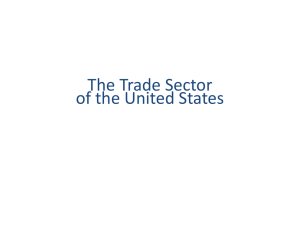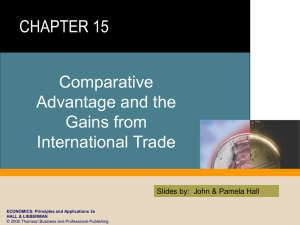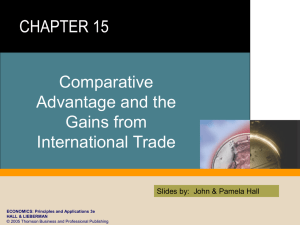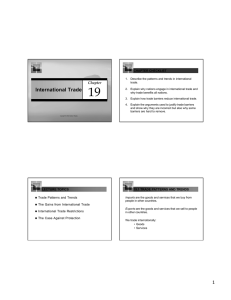The Principle of Absolute Advantage
advertisement
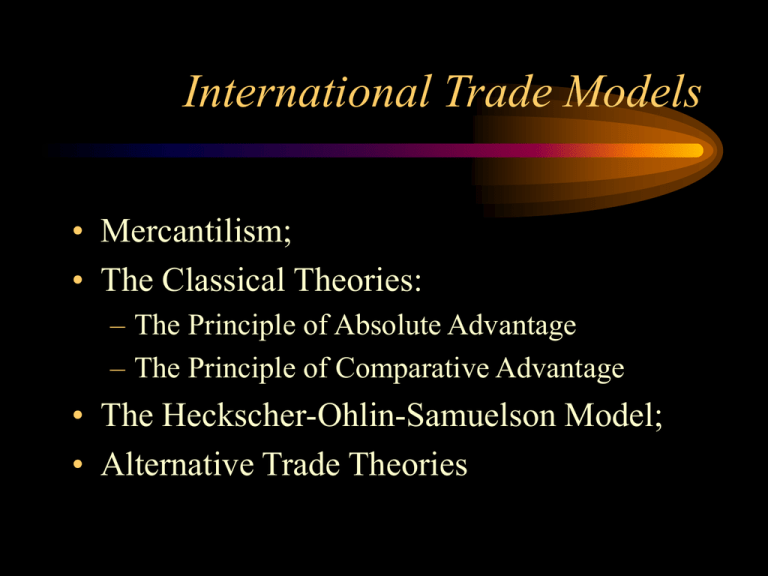
International Trade Models • Mercantilism; • The Classical Theories: – The Principle of Absolute Advantage – The Principle of Comparative Advantage • The Heckscher-Ohlin-Samuelson Model; • Alternative Trade Theories Mercantilism A school of thought dominant before the 19th century, which advocated restrictive trade policies, so as to maximize exports and minimize imports for the sake of accumulating gold and foreign exchange The Principle of Absolute Advantage “If a foreign country can supply us with a commodity cheaper than we ourselves can make it, better buy it of them with some part of the product of our own industry, employed in a way in which we have some advantage” Wealth of Nations, Adam Smith The Principle of Comparative Advantage “A nation, like a person, gains from trade by exporting the goods or services in which it has its greatest comparative advantage in productivity and importing those in which it has the least comparative advantage.” David Ricardo The Law of Comparative Advantage Mutually beneficial trade is possible whenever relative prices (opportunity costs) between two goods differ in two countries. Pre-Trade Equilibrium in Country A • • • • Production = 25X + 12.5Y Consumption = 25X + 12.5Y Relative Price of X = 1/2 Y Relative Price of Y = 2 X A has a comparative advantage over B in producing X, because the relative price of X in A is lower than the relative price of X in B. Pre-Trade Equilibrium in Country B • • • • Production = 10X + 12.5Y Consumption = 10X + 12.5Y Relative Price of X = 5/4 Y Relative Price of Y = 4/5 X B has a comparative advantage over A in producing Y, because the relative price of Y in B is lower than the relative price of Y in A. Free-Trade Equilibria • Country A: – Production = 50X + 0Y – Consumption = 30X + 20Y – Relative Price of X = 1 Y Exports = 20X Imports = 20Y • Country B: – Production = 0X + 25Y – Consumption = 20X + 5Y – Relative Price of X = 1 Y Exports = 20Y Imports = 20X The Gains From Trade A nation’s gains from trade consists of two components: • the gain from the reallocation of consumption; and • the gain from specialization in production. The fact that a nation unequivocally gains from international trade does not mean that all groups within the nation necessarily gain: in fact some groups will lose. Who Gains? • Producers and workers in the export industry gain as a result of higher world prices and a larger volume of trade; • Consumers of the import competing good gain as a result of lower world prices and a larger supply; and • Firms which use imported components and materials in their production process gain as a result of lower import prices. Who Loses? • Producers and workers in the importcompeting industry lose due to increased competition from imports; • Consumers of the export good lose due to the smaller supply available to the local market and higher world prices; and • Firms which use exportable components and materials in their production process lose due to increased prices.


